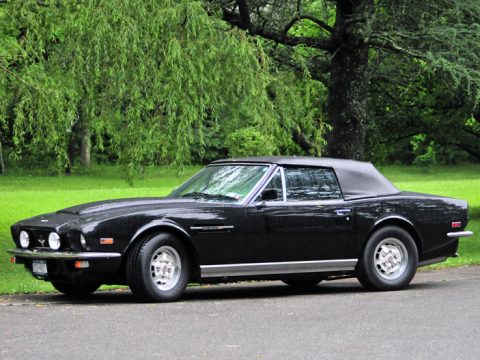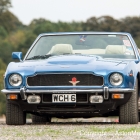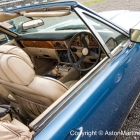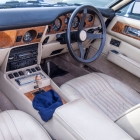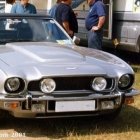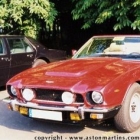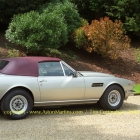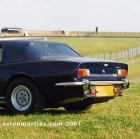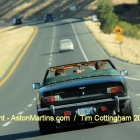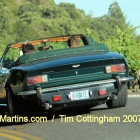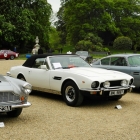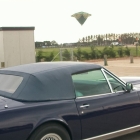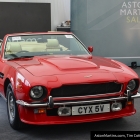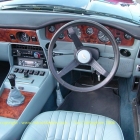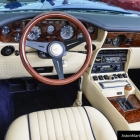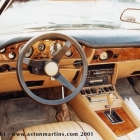The separate chassis of the V8 needed some additional strengthening to compensate for the lack of a roof and thus added an additional 70 kg to the weight. This blunted performance slightly as did the standard fit automatic gearbox; yet a maximum speed of a little over 140mph and 0-60mph 7.7 seconds was more than satisfactory.
The car was so popular in the US that for many months, the only right hand drive example was the prototype (pictured above). This car was shown at the UK motor show in 1978, was extensively road tested and reviewed in motoring magazines and was the personal car of Alan Curtis, who at the time was Managing Director of AML. It is still finished in it’s original Tourmaline Blue although it no longer carries the prestigious AML1 numberplate.
Picture below is an early right hand drive series one Volante, easily identified by the bulge in the bonnet needed to clear the four Weber carburettors. Indeed, this style of bonnet was first seen on the Volante and only transferred to the saloon with the introduction of the ‘Oscar India’ four months later. This was once a works car and thus wore the famous AML 1 registration number .
Walnut veneers made a welcome return to Aston Martins in the Volante. And again, a few months later, the saloon also received the the rich burr walnut veneers. Wood has been a feature of Aston Martins ever since then and until 2001 with the Vanquish, which has no wood inside whatsoever. The car with the blue interior is a rare manual Volante.
As one might expect, the Volante is more sought after than the closed saloon and often used values are at least 100% higher. But the blue car above was somewhat the exception to the rule at the Brookes/AML auction in May 2000. Whilst only described as ‘fair’ condition, the early Volante found a new owner for a modest £19,550 including commission. I would doubt you could buy the same car today for such little money.
All four Volantes above are later carburettor cars and are fitted with the attractive BBS cross spoke alloy wheels which replaced the GKN wheels Even with the power operated hood erected, the car is still extremely handsome.
Initially the US cars had chrome bumpers just like all the European cars. But after 1979 the huge black rubber DOT safety bumpers were standard on cars for the US market. This example is typical of cars exported to the US after 1979, although it actually resides in the Netherlands.
Many US owners would like to convert their cars back to chrome bumper Euro spec. Not too difficult for the front, but the rear needs modifications to the bodywork. See the V8 Volante Weber efi page and visit Autosport Designs for more information. And before you book your car in for a conversion, I will add that despite their looks, the US bumpers do provide excellent protection for the coachwork.
Production of the carburettor Volante continued until January 1985 with the introduction of the revised fuel injected car; a total of 439 examples were completed.



